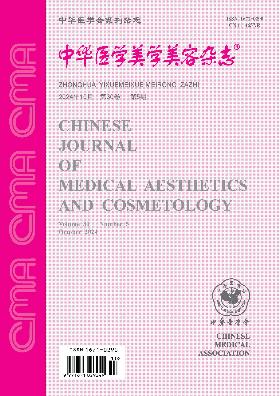Directional differentiation of human adipose-derived stem cells into keratin-forming cells
引用次数: 0
Abstract
Objective To optimize the method of the directional differentiation of adipose-derived stem cells into keratinocytes. Methods Adipose-derived stem cells (ADSCs), separated by collagenase digestion method, were isolated and cultured. Then the expression of surface specific markers CD34, CD44 and CD90 were detected by flow cytometer. The effect of different induced mediums cultured for two weeks on the differentiation of ADSCs into KCs was demonstrated: Group 1, the DMEM supplied with 2% FBS and 49% supertant of KCs; group 2, KSFM medium; group 3, DMEM medium supplied with 10% FBS and 5 μM ATRA; 10% FBS DMEM as the control group. Immunofluorescene staining was applied to detect the expression of keratin CK14 and F-actin. Results A flattened fibroblast-like morphology was observed in cells, the positive expression rate of CD34 was 0.08%, while those of CD44 and CD90 were 99%. The cells that could differentiate into osteoblasts and chondrocytes, indicated that the cells were ADSCs. There was no significant change in the cell morphology in the group 1 under the induction medium; about 10% of the cells in group 2 were altered; the morphological changes were obvious in group 3, and approximately 20% of the cells showed irregular polygon. The immunofluorescene staining of the cells in group 3 indicated that the cells showed cobblestone-like phenotype and an organized cytoskeletal network with dense actin fibers at the edges; some cells were positive for CK14. Conclusions ADSCs show higher induction rate under ATRA stimulation. Key words: Adipose tissue; Stem cells; Cell differentiation; Keratinocytes人脂肪干细胞向角蛋白形成细胞的定向分化
目的优化脂肪干细胞向角质形成细胞定向分化的方法。方法采用胶原酶消化法分离培养脂肪干细胞。流式细胞仪检测CD34、CD44和CD90的表达。不同诱导培养基培养2周对ADSCs向KCs分化的影响:第1组,DMEM添加2%的FBS和49%的KCs;第2组,KSFM介质;第3组,DMEM培养基加入10%FBS和5μM ATRA;10%FBS-DMEM为对照组。免疫荧光染色法检测角蛋白CK14和F-肌动蛋白的表达。结果CD34阳性表达率为0.08%,CD44和CD90阳性表达率均为99%。可以分化为成骨细胞和软骨细胞的细胞表明这些细胞是ADSCs。在诱导培养基下,第1组的细胞形态没有显著变化;第2组中约10%的细胞发生改变;第3组细胞形态变化明显,约20%的细胞呈不规则多边形。第3组细胞的免疫荧光染色表明,细胞表现出鹅卵石样表型和有组织的细胞骨架网络,边缘有致密的肌动蛋白纤维;部分细胞CK14阳性。结论ATRA刺激下ADSCs的诱导率较高。关键词:脂肪组织;干细胞;细胞分化;角质形成细胞
本文章由计算机程序翻译,如有差异,请以英文原文为准。
求助全文
约1分钟内获得全文
求助全文
来源期刊
自引率
0.00%
发文量
4641
期刊介绍:
"Chinese Journal of Medical Aesthetics and Cosmetology" is a high-end academic journal focusing on the basic theoretical research and clinical application of medical aesthetics and cosmetology. In March 2002, it was included in the statistical source journals of Chinese scientific and technological papers of the Ministry of Science and Technology, and has been included in the full-text retrieval system of "China Journal Network", "Chinese Academic Journals (CD-ROM Edition)" and "China Academic Journals Comprehensive Evaluation Database". Publishes research and applications in cosmetic surgery, cosmetic dermatology, cosmetic dentistry, cosmetic internal medicine, physical cosmetology, drug cosmetology, traditional Chinese medicine cosmetology and beauty care. Columns include: clinical treatises, experimental research, medical aesthetics, experience summaries, case reports, technological innovations, reviews, lectures, etc.

 求助内容:
求助内容: 应助结果提醒方式:
应助结果提醒方式:


